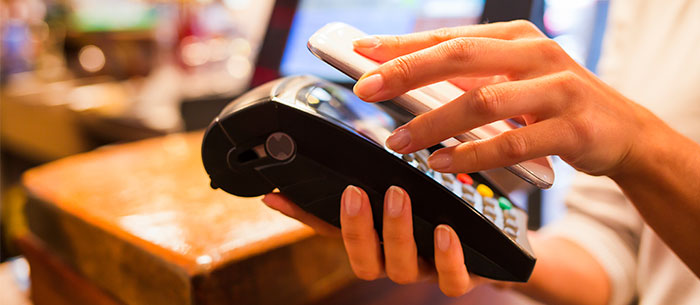
“Apple Pay will forever change the way all of us buy things.” – Tim Cook
Retail shoppers have changed with the times. Consumers today embrace digital devices and tools, research products on the go, showroom to get the best price on what they want, and turn to their digital device to make a purchase, rather than turn into the parking lot of their favorite brick and mortar store. Personally, I have changed my shopping habits using Apple Pay and ‘showrooming’ with my device in hand.
And most recently, the introduction and proliferation of digital payment systems into the mainstream has only furthered the transition from physical to digital. Systems like Apple Pay, for example, could be a differentiator, taking nearly all the friction out of the online purchase process, while also making offline purchases faster and easier. A recent Business Week report on mobile payment start up Venmo titled “Cash is for losers” attests to the larger trend of consumers using new transactional networks to make payments digitally, and represents a shift of power to the consumer in our ever-evolving e-economy.
While consumers have always had the power to vote with their wallets, they now wield even more power, with decentralized digital currencies like Dogecoin and Bitcoin. There are a plethora of options, ways and places to shop. Therefore, it’s crucial for retailers to not only be responsible with customer transactions to earn and keep their trust, but also to create easy and consistent experiences from within the store to on the device.
As a result, retailers need to understand more than just the technology landscape. They need to understand how it has fundamentally altered consumers and their behavior. Scott Snyder, senior fellow at Wharton, outlined several new consumer segments that should be recognized by retailers:
- Analogs: Those who aren’t able or aren’t interested in engaging in digital/mobile technologies
- Wannabes: Nascent users who are eager to get up to speed and catch up to the cool kids
- Mainstreamers: “The pregnant middle of the market, ready to be nudged toward behaviors and outcomes that are good for them and others.” These are the most eager and valuable users.
- Paranoids: The hardest users to persuade of value, and the easiest to turn off
- Chameleons: These users change their behaviors according to their present interests and situations. They are protective of their data and take it upon themselves to understand how it will be used
- Digital Nomads: While willing and eager to share their data for a fair value exchange, retailers would be wise to remember that these users expect an exceptional experience as that return.
It’s important for retailers to understand each of these segments and how they should be approached at every stage of the buying cycle. Companies that are able to reorient their marketing and product-development efforts around digital customer segments and behaviors will tap into the hypergrowth that mobile, social and wearables are experiencing,” says Snyder. What’s important is, as always, to put the user first and create experiences that are relevant and appropriate to each audience. So, retailers, how are you optimizing interactions, activating data, and tailoring messaging in order to engage with the new and varied consumers of 2015?
For more information on MediaMath Retail, visit the landing page.
